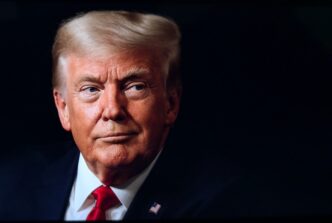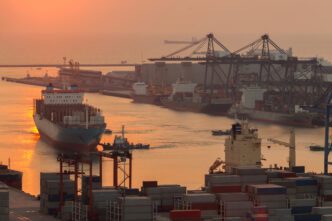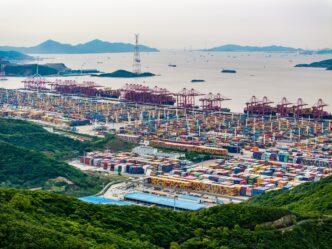WASHINGTON – In a historic and audacious move that upends nearly a century of American economic policy, President Donald Trump has single-handedly remade the landscape of global trade. With a sweeping new tariff regime set to take effect, the United States has officially abandoned the post-World War II consensus on globalization and free trade, embarking on a protectionist experiment with no modern precedent.
The new tariffs, the highest America has imposed since the infamous Smoot-Hawley era of the 1930s, represent the culmination of a months-long, high-stakes campaign of economic pressure. The administration is casting the moment as a resounding victory, a vindication of a strategy that has forced trading partners to the negotiating table and begun to rebalance the global economic order. But for businesses, economists, and global allies, it is a moment of profound uncertainty and fear, a leap into a new era where the rules of commerce are being rewritten on the fly, with potentially devastating consequences for the interconnected world economy.
A New Economic Reality: The Tariff Wall Rises
The scale of the policy shift is staggering. For decades, the United States has been the primary architect and champion of a global system built on lowering trade barriers. This philosophy persuaded American companies to build global supply chains, offshoring manufacturing to countries with cheaper labor, which in turn kept consumer prices low. Last year, the effective tariff rate on imports to the United States was a mere 1.2%, the result of a long, bipartisan effort to foster international trade.
When President Trump’s new tariffs take full effect on August 7, that rate is set to surge to more than 18%, according to an analysis by Yale’s Budget Lab. This is not a minor adjustment; it is a fundamental reconstruction of America’s economic relationship with the world. The move effectively builds a tariff wall around the U.S. economy, a move designed to force a radical rethinking of where and how goods are made.
The White House View: A Strategy Vindicated
From the perspective of the White House, the chaotic, often-criticized process has been an unqualified success. Despite dire warnings from nearly every mainstream economist, the administration’s high-risk gamble appears, in the short term, to have paid off.
The administration points to a series of key victories. A steady stream of bilateral trade deals has been secured with major partners like the European Union and Japan, locking in higher tariff rates than before. The U.S. Treasury is now collecting about $150 billion in annual tariff revenue, a significant increase that the president views as a new income stream. The U.S. economy, far from collapsing under the weight of the trade war, has remained remarkably resilient, with the stock market hovering near record highs and the labor market holding strong.
At the core of this self-proclaimed success is a strategy built on a raw and unapologetic use of American leverage. The administration correctly bet that the indispensable nature of the U.S. consumer market would give it immense power in any negotiation. The president’s credible willingness to impose and then escalate tariffs, crushing any retaliatory efforts, created a sense of inevitability that forced even close allies to the negotiating table to accept terms they would have previously deemed unthinkable.
The Corporate Reality: A Billion-Dollar Bill Comes Due
While the White House celebrates its strategic victory, corporate America is beginning to tally the immense cost. Companies that have spent decades building intricate, efficient global supply chains are now facing a massive new tax bill.
The numbers are stark. Tech giant Apple announced Thursday that it paid $800 million in tariffs last quarter and expects that figure to rise to $1.1 billion in the current quarter. Major automakers, including GM, Stellantis, and Volkswagen, reported a collective tariff bill of over $1 billion in the past quarter alone.
This new cost of doing business is now cascading through the economy. For months, many major retailers have been absorbing the initial rounds of tariffs, hoping they would be temporary. That hope has now evaporated. Retail behemoths like Walmart and Target have publicly stated that they will no longer be able to absorb all the tariff costs and will have no choice but to raise prices for their customers. This sets the stage for a potential new wave of consumer price inflation, a direct consequence of the new trade policy.
The Economic Caveats: A Complicated Picture
Despite the administration’s triumphant narrative, a closer look at the data reveals a more complicated and less clear-cut picture. Each of the White House’s proclaimed victories comes with a significant caveat.
The soaring tariff revenue, for instance, is not being paid by foreign countries, as the president routinely claims. It is a tax paid by U.S. importers, who then pass that cost on to American businesses and consumers. The numerous announcements of new factory construction in the United States, while politically potent, often refer to projects that were already in the works or are years away from breaking ground. Furthermore, with about 400,000 open manufacturing jobs that the country is already struggling to fill, it remains unclear where the labor force for these new factories will come from.
Even the president’s primary metric for success, the U.S. trade gap, has not responded as planned. After briefly narrowing as companies worked through their pre-tariff inventories, the trade deficit is widening again, suggesting that the fundamental dynamics of global trade are not so easily altered by tariffs alone.
A Leap into the Unknown
It is impossible to overstate the historical significance of this moment. By abandoning the principles of free trade, President Trump is not just changing a policy; he is challenging the very foundations of the global economic order that America itself built after World War II.
Economists continue to fear a delayed shock reaction that could still damage the global economy. The last time the United States embraced such a protectionist stance with the Smoot-Hawley Tariff Act of 1930, it is widely believed to have deepened the Great Depression. While the current economic context is vastly different, the historical parallel serves as a chilling reminder of the potential for unintended consequences.
For now, President Trump’s grand trade experiment has paid off better than most of his critics had expected. But the long-term effects of this great reversal are still unknown. The world is now in uncharted territory, and the question of whether this new era of protectionism will lead to a revitalized American manufacturing base or a new period of global economic instability is one that only time will answer.








